Etymology of ‘Gedan Barai’ (下段払い) - or ‘Gedan Hara-I’ Dissecting the ‘Lower Block' of Karate-Do!3/8/2023 I was asked a while ago to look into the etymology of the Karate-Do self-defence technique of 'Gedan Barai' - once by a British student (who had attended an advanced Japanese language course as he is a Solicitor) - and again by a Japanese student who was passing through the UK and had visited a few Dojos - saying some 'sounds' of the names of the techniques being used did not seem correct: My view is that this transmission of culture is a) ongoing (and therefore a continuous process), and b) is a two-way street which must involve forgiveness and understanding. We must all help one another until our mutual understanding is correct. What is interesting is how philosophically different the 'Lower Block' is treated within Karate-Do compared to the 'Middle' and 'Upper' Blocks (which are explained merely as mechanical devices and not associated with the 'Conception Vessel' they pass through)! It is as if the 'Lower Block' is from a very old martial ritual! Finally, I was once told that the 'Lower Block' is not just a 'parry' or 'check' of an incoming attack - but is also a simultaneous 'Hammer-Strike' to the opponent's groin-area. Interesting food for thought.
0 Comments
Our Hakka family gongfu style is primarily 'Northern' in structure and was brought into the New Territories of Hong Kong by Chinese people migrating from around the Henan area (during the 1600s as the Ming Dynasty collapsed) - but sometimes much further North (my partner's family migrated to the Shenzhen area from Shandong). Our 'Northern Snake Fist' (北蛇拳 - Bei Shi Quan) is comprised of sixty-four movements - which mirror the sixty-four hexagrams (卦 - Gua) of the 'Yijing' (易經) - known as the 'Change Classic' or 'Book of Change' (I Ching) in the West. This text must be studied over many years supplemented by hours of seated meditation and the perfection of 'movement' and 'stillness' when this 'Form' (形 - Xing) is deployed. This is an integrated Form requiring the mastering of the 'external' (外 - Wai) and the 'internal' (内 - Nei) - or 'Zagong' (雜功). All traditional 'Forms' begin with the practitioner facing 'South' - the area of warmth, good farming land, trade, plenty and controllable borders within ancient China. By comparison, the 'North' can be cold, overly 'hot', suffer from a scarcity of food and peopled by barbarian hordes all seeking to attack, destroy and steal! The 'Snake Form' unfolds on overlapping 'cross' formations - starting toward the 'East', West', 'North' and then 'South' repeating the same techniques - which then adjust into a new set of techniques. The 'cross' alters into 'Southwest', 'Northeast', 'Southeast' and 'Northwest', etc. There are a number of unique movements (such as 'Gorilla Punches the Ground') - but generally speaking the 'cross' (both 'cardinal' and 'ordinal') formation holds true. This section appears to the 'Southwest' and is the first repetition of 'three' performed in this direction. The structure builds-up just as a hexagram does in the 'Yijing': 1) Foundation (first two lines of a hexagram - representing the Broad Earth) - Free Stance - Bodyweight is primarily channelled down through the back leg 'bent' at the knee and into the ground 'rooting' the structure. A 'rebounding' force emanates from the ground and up the supporting leg - spreading through the torso, upper limbs, and non-supporting front leg. This arrangement generates a 'floating' orientation in the front-leg whereby the foot feels as if it wants to 'raise' automatically - and the practitioner must exert 'intention' to keep the toes of the free-foot gently 'touching' the ground. This is in preparation for the 'groin kick' which has its origination in this 'Form'. the foot swiftly travels upwards with the toes turned 'down' and the groin of the enemy is impacted with considerable force. Due to the expert position of the back-leg and pelvic girdle - the front-leg can continuously 'pivot' around the created leverage with very little effort and in a continuous manner - generating huge amounts of force with very little effort. The groin area of the enemy may be struck repeatedly without stopping. Although all this is present and taught as an application to the 'Snake Fist' Form - within the Form itself - the front-foot never leaves the ground. Stance work is generally quite 'high' in orientation - with foot-work premised on 'light', 'short' but 'precise' heel-to-toe steps (involving bodyweight being expertly 'shift' from side to side). 2) Torso (lines three and four of a hexagram - representing Humanity). The torso 'slides' and 'shifts' from side-to-side and 'forward' into newly acquired or 'opened' space. The torso retains a forty-five degree angle as its continuously 'shifts' one side forward and then the other (sixty-one movements in this 'Form' continuously move 'forward' with only three movements taking a step backward). The torso also 'tilts' left and right from the centre-line as movements are executed - creating a moving target that is difficult to hit as it advances. Gaps are created through the intimidation of asserted movement - space which the Snake Form practitioner then occupies by 'stepping' into - thus depriving the opponent of options. This works because the 'Snake' is limited to the lethal 'eye-strike' which must be defended against at all costs! The torso 'slithers' and 'slides' into the space generated through the intimidation of the opponent! Despite moving forward the onus is upon preventing the opponent from generating or landing any powerful or significant blows! The torso shifts left and right - and forward into front-left and front-right! The expert use of footwork establishes and maintains this momentum. 3) Upper Limbs (lines five and six of the hexagram - representing the Divine Sky). In this section the reverse hand is deflecting the opponent's attacking limb down and to the side of the torso. This involves an open-hand with slightly spread finger aligned with an empowered fore-arm and 'pointed' elbow. The alignment and rebounding bodyweight renders this arm as strong and as heavy as a block of concrete and yet as light and manoeuvrable as silk blowing in the wind! The footwork and torso can 'move' around this 'blocking' arm so that direct conflict is avoided and the opponent's natural strength is bypassed by a superior (and deadly) technique. Simultaneously, the lead-hand strikes with the middle (longest) finger to one of the enemy's eyes. The severity of this attack can be varied from 'gouging' to a light 'tap' and every level of vision-disruption inbetween. The Four-fingers can be separated to create a 'double' strike which hits both the enemy's eyes simultaneously with one-hand. The fingers then collapse palm 'inward' (toward the chest) so that a powerful 'back-hand' strike is delivered to the eye and nose area of the opponent. This is followed by the hand suddenly 'closing' and delivering a power short-range punch to to side of the nose or eye structures of the opponent. During training, these blows must be practiced both 'slowly' and very 'fast'!
Dear Tony
Goju Ryu Kakie (2010) http://www.chandao.co.uk/uploads/9/4/8/2/9482304/kakiepracticeofgojuryu.pdf I was thinking about your comment regarding 'Kakie' and its relating to 'hanging', or 'to hang', and thought I had better check the accuracy of my 2010 article. As I know next to nothing about Japanese script, I cannot remember where I acquired the Japanese 'かきえ' text that I used as a contextual blue-print - particularly as there was nothing like the digitalised dictionaries and encyclopaedias that are available online today! I accessed a number of Japanese language texts regarding Karate-Do today, and found this interesting extract (although Wikipedia must always be checked for accuracy): https://ja.wikipedia.org/wiki/空手道 '今日の空手道は打撃技を主体とする格闘技であるが、沖縄古来の空手道には取手(トゥイティー、とりて)、掛手(カキティー、かけて)と呼ばれる関節技や投げ技や掛け掴み技も含んでいた。' 'Today's Karate-Do is a martial art that focuses on striking techniques, but Okinawa's ancient Karate-Do includes 'Control Hand' (取手 - Qu Shou) pronounced 'To-ui-Tī' or 'Tori-Te'(トゥイティー、とりて) in Okinawa - and 'Hang Hand' (掛手 - Gua Shou) pronounced 'Kaki-Ti' or 'Kake-Te' (カキティー、かけて) in Okinawa. These elements of the older Okinawan Karate-Do include grabbing, holding, and controlling the opponent's joints in preparation for throwing.' What is interesting to me, after reading this, is that in gongfu this very principle is termed 'Qinna' (擒拿) - which I term 'joint relocation'. Master Chan Tin Sang used to say that 'if you know how a joint should normally move - then you know how a joint should 'not' move'! Furthermore, '擒' (qin2) also means to 'arrest' and 'constrict' - in other words, to 'stop' the opponent moving by taking away their options! As regards '拿' (na2), this means to 'seize' and 'grasp', etc! With 'Hang Hand' (掛手 - Gua Shou) mentioned above, the ideogram '掛' (gua2) refers to the act of hanging or suspending. It can also mean to 'wear', 'arrive at', to 'divide' and to 'end' or 'terminate' an activity. The question is 'why' does this ideogram mean all this? Left Particle = 扌(shou3) - this signifies a left-hand. Right Particle = 卦 (gua4) - refers to a trigram or hexagram in the Yijing (Change Classic) - the act of 'divining' and the agency of 'change'. Therefore, 卦 (gua4) is comprised as follows: Left Particle = 圭 (gui1) - a ritualistic (pointed) jade object used when addressing the emperor! This is made by doubling the ideogram '土' (tu3) which symbolises 'earth' or 'clay' being worked on a potter's wheel! Right Particle =卜 (bu3) - the act of 'divining' through integrating the 'cracks' derived by placing a hot poker on an ox scapula or tortoise shell (plastron). This is the historical basis of the 'Yijing' or 'Book of Change' (I Ching). This would suggest that '掛' (gua2) derives from the skilled action of an Official or Minister (who served the King - the only person in ancient China who was allowed to access the divinatory 'oracle'). This Diviner used his left hand whilst 'separating' and 'dividing' the tortoise shells and/or ox scapula - probably 'hanging' or 'suspending' them up - whilst the right-hand held the heated metal rod which was applied to the sacrificial object. The King asked a question (which was written down by the Diviner), the hot poker touched the shell or bone and the rising smoke carried the message up to the divine sky! The answer was received through the various 'cracks' and 'patterns' manifest in the shell or bone - which only the Diviner could interpret. As these questions, received patterns and answers were all collected and sorted - the basis for the 'Yijing' or 'Book of Change' was formed. In 2010 I used the Japanese (Hiragana) text: かきえ = Kakie In the above Japanese Karate-Do page the following ideograms are used to express exactly the same idea: 1) カキテ = Kakite - this is written in 'Katakana' 2) かけて = Kakete - this is written in 'Hiragana' As there are a number of variations of the same ideograms within the Japanese language, the first two ideograms I used in my 2010 article are identical with today's findings and match these expressions. Placing the ideogram I used first in each section, this is how they compare: 1) 'か' (Hiragana) is the same as 'カ' (Katakana) = 'Ka' - but in Japanese this means 'mosquito'! In my 2010 article I thought this might have been a Japanese rendering of the much more likely Chinese ideogram of '力' (li4) - which stands for 'power' and generated 'force' - given the nature of the Goju Ryu exercise under discussion. 2) 'き' (Hiragana) is equivalent to 'キ' (Katakana) and directly related to 'け' (Hiragana). Whereas my 'き' and the above 'キ' carry the sound 'ki' (and can mean 'ki' energy, wood, tree, spirit and origin, etc), the ideogram 'け' is pronounced 'Ke' and means 'hair', 'fur' and to 'divine'. In my 2010 article I though this might represent the Chinese ideogram '手' (shou3) or 'open hand' - which is often used to signify 'mastery' through 'control'. 3) I used the ideogram 'え' (Hiragana) which is pronounced 'E' and means to 'gather', 'meet' and 'turn'. The examples above use 'テ' (Katakana) and 'て' (Hiragana) both pronounced 'Te' and although used to imply an 'open hand' in the above Japanese text, more specifically these ideograms are used to refer to 'doing something' or 'an act in motion' which might or might not involve the use of the hand. Either way, my thoughts in 2010 was that this should represent the Chinese ideogram '元' (yuan2) - referring to the 'origin' or 'root' of a thing. (It is interesting that the reading of 'origin' in this section 3 does match an alternative meaning found in section 2 above - where 'き' can also mean 'origin' - as if a hidden meaning was accidently stumbled upon)! In 2010 I was working from the idea that Higaonna Kanryo was being taught Chinese terms in the Hokkien (Fujian) dialect - which were then written down in the various alphabets used in Japan! As it stands, the Japanese interpretation of 'Kakie' (in whatever version) reads something like the 'mosquito that lives in the woods is doing something (possibly with his hand)!' Of course, this could be prosaic and refer to the irritating to and fro (backwards and forwards) movement of the mosquito as it moves with endless 'ki' energy, around an opponent that seems flat footed and stationary - like a tree! Looking up '掛手' (Gua Shou) I found this Japanese language article which mentions Kakie as also being found within Sumo Wrestling (fed through the auto-translator): https://kotobank-jp.translate.goog/word/掛手-2021277?_x_tr_sl=ja&_x_tr_tl=en&_x_tr_hl=en&_x_tr_pto=sc Therefore, '掛手' (Gua Shou) in the Chinese language should read in the Japanese language as: 掛 = 'Ka', 'Ke' or 'Kai' (it seems both 'Ka' and 'Ke' and used simultaneously) 手 = 'Te', 'Ta', or 'Shu' 掛手 = 'Kake-Te' This Japanese language page also uses the (Hiragana) variant of 'かけで' to describe this activity - which reads 'Ka Ke De' and translates as 'to over come an obstacle!' This is interesting, as the change of character at the end generates a coherent sentence - whereas the three other examples quoted above: 1) カキテ (found today) 2) かけて (found today) 3) かきえ (used in my 2010 article) In and of themselves, do not carry any particular or coherent meaning. Although, my 2010 variant keeps translating as 'calligraphy' - but this could imply the hidden meaning of skilfully moving the hand to manipulate the environment! All in all, I think this new data immensely increases our knowledge of this Okinawan cultural activity! Even though it was not available to me in 2010, nevertheless, my reading of the characters is sound and I like the theoretical approach - which I think was the product of your knowledgeable input and the outcome of our long discussions about the history of Goju Ryu! Thanks Adrian Combative interaction can occur in a myriad of ways. It can be psychological, emotional and/or physical. Intense combat can involve all three realms of existence. This is a serious situation where the ‘immediacy’ of the threat generates the inherent danger! Relaxation, awareness and superior positioning is the way to meet these challenges in the physical world. How this unfolds is dependent entirely upon an individual’s experience and the style they have been practicing for decades. Spiritual maturity is defined as the ease with which a person occupies their mind and body, and their ability to predict aggression and quickly counter ‘shock’. This is how the Master makes what is hard for most people appear to be ‘easy’. In other words, this is unhindered ability of an individual to come to terms with ‘change’ (易 - Yi4). In other words, a traditional Chinese martial artist, regardless of style or lineage, should make a point of studying the ‘Classic of Change’ (易經 - Yi Jing). This study should be ongoing, deep and profound. Furthermore, it should be free of all profit-seeking and worldly limitations. No one can ‘tell’ you how to understand this text and you must take responsibility for your own understanding of it.
What does ‘易’ (yi4) mean? The upper particle is ‘日‘ (ri4) is the Moon that lights up the Earth through its reflection of the Sun! This probably refers to a light in the darkness or a cultivated light which dispels darkness (the exact definition of the Sanskrit term ‘Guru’). The bottom particle is ‘勿’ (wu4) which composed of the left sub-particle of ‘刀’ (dao1) or ‘blade’ and the right sub-particle of ‘𠚣’ (dao1) or ‘dripping blood’. When placed together, these two sub-particles generate ‘勿’ (wu4) which literally depicts ‘blood dripping from a blade’. As a distinct character, this ideogram appears on the Shang Oracle Bones (c. 1766 to 1122 BCE) and was used as a ‘warning’ ‘not to do something’, ‘not to carry-out a specific action’, or to ‘stop doing what has already been done’. The emphasis is from ‘movement’ to ‘stillness’. Within modern (everyday) Chinese language use, ‘勿’ (wu4) is used to refer to the word and concept that denotes ‘no’ as opposed to ‘yes’. When combined, and taking all this data into consideration, ‘易’ (yi4) seems to imply a situation where once there was difficulty (勿 - Wu) - but this difficult situation is transformed into its opposite by the presence of ‘日‘ (ri4) - which is the Moon that lights-up the entire landscape through its glow! What was previously ‘hard’ is now made ‘easy’ by a ‘change’ of circumstance. When beneficial ‘change’ is experienced, it is generally the case that actions that were once ‘blocked’ or ‘hindered’ now become ‘open’ and ‘free-flowing’. This explanation demonstrates how the ideogram ‘易’ (yi4) can simultaneously mean both ‘easy’ and ‘change’. However, another version of this ideogram is ‘蜴’ (yi4). It is related and exists within the same series as ‘易 (yi4)’. The difference is that this version - ‘蜴’ (yi4) - has the extra left-hand particle of ‘虫’ (chong2) which refers to a dangerous, venomous snake, or a similar type of animal or insect. When expressed as ‘蜴’ (yi4) - this ideogram takes on the meaning of a ‘lizard’ which can adapt its outer skin to ‘blend-in’ with the ever-changing environment (I.e., a ‘chameleon’). This type of lizard knows how to ‘not stand out’ and how to ‘achieve things’ in an ‘effortless’ and ‘unassuming’ manner. As the external temperature changes – so does the pigmentation arrangement of the Lizard’s skin. As a means of temperature control – the lizard also manages to remain ‘unseen’ as an evolutionary by-product. An advanced practitioner of martial arts can adapt to the physical environment in a manner that preserves his or her life, and which removes greed, hatred and delusion from the mind (and body) of the opponent. When this type of change is mastered in every position, a practitioner literally seems to perceptually ‘disappear’ as they no longer react in a dualistic manner. There is no one to chase and no one to hit... Translator’s Note: I knew of Master Hai Deng before he became famous for his martial arts skills. Indeed, he was considered a very devout Ch’an Buddhist Master whose understanding had been tested and confirmed by Master Xu Yun (1840-1959). He happened to come from the Sichuan area which has a number of Ch’an Temples renowned for their martial arts practice. The combining of martial arts and spirituality is very common in China and does not only happen at the Shaolin Temple in Henan. However, Master Hai Deng once tested his martial arts skills against another disciple of Master Xu Yun – namely ‘Master Ti Guang’ [体光] (1924-2005) - and lost the bout. There was no ego or anger involved and both monastics behaved with humility and respect toward one another. Master Hai Deng was very grateful that weaknesses in his physical technique had been exposed so that he could work at strengthening these areas and enhance his understanding in this art. More to the point, Master Xu Yun fully trusted Master Hai Deng to run monasteries as the Head Monk and teach the Buddhist Sutras to the monastics and visiting laity! Of course, with his visit to the West, and his involvement with the modern media, rumours and misunderstandings developed that were not the fault of a simple Buddhist monk. It is the world of dust that is to blame – and the Dharma that Master Hai Deng effectively upheld all his life! ACW (6.7.2021) Master Hai Deng was originally just an unknown poor monk. Because of a coincidence, it seems that he became famous overnight and a household name. He became a heroic figure that people talked about. This all started with a news documentary called "Sichuan Unusual Events Record" (四川奇趣录 - Si Chuan Qi Qu Lu). It reported that in 1979, the Great Wall Film Company of Hong Kong and Emei Film Studio were preparing to jointly shoot a large-scale news documentary about unusual people from Sichuan. When the film crew was shooting at Baoguang (宝光 ) Ch’an Temple, a famous temple in western Sichuan, they heard that a martial arts-practicing monk - named ‘Hai Deng’ - lived in seclusion in the mountains of Jiangyou, spending his days and nights deep within seated meditation. After searching the remote areas, they eventually found Master Hai Deng on the mountainside near Chonghua Town, Jiangyou County. Master Hai Deng lived in a simple hut built on the mountainside. Although the thatched hermitage is simple - it has a very Ch’an-like name -"Benyuan Jingshe" (本愿精舍) - or ‘Source of the Will Abode’. This name was devised by Master Hai Deng himself. The interior space of the hut is very low, narrow and small. The only items inside are a meditation stool with a mosquito net, a small stove for cooking, a dining table, and a few bowls and chopsticks. Why is there no bed? It turned out that in order to pursue the true meaning of Buddhism and martial arts, Master Hai Deng did not sleep in a bed for decades, and sat upright in meditation at night. From this point of view, Master Hai Deng can be regarded as a generation of Buddhist monastics truly living outside the world. Master Hai Deng was invited to the Baoguang Temple to take part in the filming of the TV show. When he finished performing martial arts, this esteemed, elderly monk granted interviews with the monks and the local martial arts-loving young people associated with Baoguang Temple – who asked his advice about meditation and self-defence practice. He was devoted to teaching, and he was not fatigued in anyway despite his age - and was able to write poems on the spot. If Master Hai Deng's posthumous work "Shaolin Cloud Water Poem Collection" (少林云水诗集 - Shao Lin Yun Shui Shi Ji) is examined, his improvised "Ten Poems of Baoguang Temple" are included, the construction style of which is considered quite high. The term ‘云水’ (Yun Shui) or ‘Coud Water’) is a term used to refer to a Buddhist monastic who wanders from place to place – like a leaf blowing in the wind – or a drop of water falling like rain. (Translator: See Hexagram 56 ‘旅’ (Lu) of the ‘Classic of Change’ (Yijing) - the ‘Wanderer’ to explain this situation). After the release of “Sichuan Unusual Events Record", Master Hai Deng's reputation gradually became apparent. In 1982, the head monk of Shaolin Temple - Shi Xingzheng (释行正) - sent a monk to Sichuan to study at the Buddhist Academy. Since Master Hai Deng had visited the Shaolin Temple several times before, Shi Xingzheng decided to personally visit the ‘Source of the Will Abode’ to pay a return visit to Master Hai Deng. Whilst discussing Ch’an, Master Hai Deng expressed the intention of going to Shaolin and formally becoming a humble ‘Disciple’ of the famous temple. What can Shi Xingzheng say? He could only welcome such a visit. Master Hai Deng took six disciples and went to Shaolin to live and study with them for a time. Many of the Shaolin monks thought it a happy occasion to meet with Master Hai Deng – a Ch’an monk who seemed to have come from another (earlier) time! In 1983, the movie "Shaolin Temple" starring Jet Li was very popular. "Shaolin martial arts" immediately became a cultural heritage sought after and admired by the people. In November 1982, Xiao Dingpei (肖定沛) - a disciple of Master Hai Deng - wrote an article about Master Hai Deng practicing Ch’an in the Shaolin Temple, and had it published. Outsiders did not know that Master Hai Deng was only a visiting ‘Disciple’ of the Shaolin Temple. This misunderstanding was compounded by the fact that many had seen Master Hai Deng perform three extraordinary qigong exercised in the “Sichuan Unusual Events Record" documentary – and mistakenly believed he had learned these abilities at the Shaolin Temple! This led to the further confusion that Master Hai Deng was a Ch’an monk ordained at the Shaolin Temple (he was not) and that his martial arts skills were learned at the Shaolin (they were not). It has to be made clear that Master Hai Deng never personally claimed any of this and was usually the last to hear about each rumour! Furthermore, a well-known author concocted a biography of Master Hai Deng – which described him as a Shaolin monk – and even that he was the ‘Head Monk’ (Abbot) of the Shaolin Temple! Then, in 1983, the Beijing Evening News added to the flames, serializing this so-called ‘biography’ of Master Hai Deng Master! Master Hai Deng was said to have only ‘reluctantly’ taken the post of Shaolin Abbot whilst he became the focus of media attention. Master Hai Deng was also invited to attend the 2nd Spring Festival Gala held by CCTV in 1984, where he performed qigong stunts. In 1984, the Central News Film Studio found Master Hai Deng and produced the documentary "Dharma Master Hai Deng of Shaolin" (少林海灯法师 - Shao Lin Hai Deng Fa Shi). . Needless to say, this film was a big success. The photography team was very excited and decided to continue to encourage others to organize the staff to write a script about the legendary life of Master Hai Deng! Unwilling to be left behind, CCTV quickly joined forces with the Chengdu Foreign Affairs Office and invited Master Hai Deng and his disciples - Fan Yinglian (范应莲), Li Xingyou (李兴友) and others to shoot the TV series "Buddhist Careers" (佛门生涯 - Fo Men Sheng Ya). With all this publicity, Master Hai Deng became a defacto Shalin monk, Shaolin Dharma-Master and Shaolin martial arts expert! As he was quiet and humble, he did not take any notice of what was happening in the outside world – but merely ‘responded’ to circumstances as matters arose, He neither confirmed nor denied all the rumours but remain detached from it all. Although sometimes criticised for this ‘silence’ in the face of this disinformation, Master Hai Deng’s behaviour was ‘correct’ from a monastic point of view, as he remained ‘non-attached’ from the ignorance of others and never made any false claims about his own history or abilities. In 1985, he accompanied a Chinese film delegation when visiting the United States, setting off a wave of "Shaolin martial arts euphoria" in throughout America; he was also invited to teach the Dharma in the City of Ten Thousand Buddhas in the USA... In the meantime, the Shaolin Temple monk - Shi Xingzheng - expressed his dissatisfaction at these developments. This view was supported in many areas around Dengfeng County, where the Shaolin Temple is located in Henan. The Shaolin Temple emphasises the Cao Dong lineage and is very strict. Only a few hundred men are chosen as fully ordained Shaolin monks at any one time, and they must go through a vigorous selection process far more difficult than anything hinted at in the movies! The Shaolin colleges surrounding the Shaolin Temple are places for sharing a certain strata of Shaolin Ch’an and martial arts knowledge – and are not considered the Shaolin Temple proper. There is a clear distinction. Master Hai Deng was not an ordained Shaolin monk of the Shaolin Temple – although he had been allowed to worship in the temple grounds – and he had not learned the ‘inner’ martial arts of the Shaolin Temple. The rumours suggested that he had – and herein lies all the subsequent trouble! Due to all the confusion and trouble caused by these misunderstandings, the Education Department of the Dengfeng County Party Committee issued a statement that according to their records - Master Hai Deng is not the ‘Head Monk’ (Abbot) of Shaolin Temple. This was handed to the Head of the Chinese Buddhist Association - Zhao Puchu (赵朴初) – for clarification (just in case the government records were out of date or otherwise incorrect). Chairman Zhao Puchu wrote a reply on December 16th, 1985. His evaluation of Master Hai Deng in the letter is very objective. There are three main points: first, Master Hai Deng is a highly respected and fully ordained Ch’an Buddhist monk from Sichuan and is the Director of the Chinese Buddhist Association; second, Master Hai Deng is a genuine Master of martial arts; third, the news media's publicity is disrespectful and misleading. The solution proposed by Zhao Puchu is to understand the misleading propaganda, and correct it over-time through education. In this way the mistaken views will come to an end. Although a statement was issued stating that Master Hai Deng was not the ‘Head Monk’ (Abbot) of the of Shaolin Temple – this fact did not affect his continued “popularity”. In 1986, he was invited to the Shanghai Armed Police Command School to instruct students in the practice of martial arts; He was hired as the general instructor of the PLA Scouts martial arts training team; in 1987, he participated in 20 episodes of the TV series "Dharma Master Hai Deng" filmed by Sichuan TV; In 1988 he settled in the ‘Martial Arts Dharma-Hall Dedicated to Master Hai Deng’ built for him in Jiangyou... But in January 1989, he fell ill and passed away. The ashes of Master Hai Deng were not yet cold when a reporter from Sichuan Daily – named ‘Jing Mou’ (敬某) , published a long report in Beijing’s "Reportage" magazine and Hainan’s "Gold Island" magazine. This article was highly disrespectful and wrongly claimed that Master Hai Deng was a ‘Liar’ and a ‘trickster’ who lived a life of only ‘making money’ out of those he fooled! Fan Yinglian - a disciple of Master Hai Deng- took Jing Mou to Court in August 1989 for “infringement of reputation”. After investigation, it was found that Master Hai Deng followed the Vinaya Discipline carefully lived a very hard life – this pure and virtuous lifestyle was fully maintained even after he became famous throughout the country. All the offerings sent to him by sincere believers were immediately donated to the local temples and hospitals, and there was nothing left for him personally. However, one of the filmmakers of the "Sichuan Unusual Events Record" documentary came forward and revealed that Master Hai Deng was suspected of cheating when performing the one-finger Ch’an hand-stand where is legs were suspended from the rafters by cloth straps. As a result, the people were in an uproar, and Master Hai Deng’s personal reputation collapsed and he became the object of criticism. Master Hai Deng became both a comedy and a tragedy. He was originally a poor monk who had left the world of dust, and was without power and money. The reason why he became a "god" was because of the wishful thinking superstitious attitudes of the people who held him up as something he was not; the reason why he was made a "demon" was also because of the same people who had become angry when they discovered their own stupidity in this matter. However, in all fairness, abandoning the dramatic changes in the last ten years of Master Hai Deng’s life, let’s just look at the majority of his life previous to his fame. He did indeed live a legendary life. He was an eminent monk who integrated Buddhism, martial arts, medicine, and literature. All these great achievements are ‘true’ and represent far more than most people achieve in a single life-time. The most commendable thing is that in the last ten years of his life, although he was praised as a god by the people, he could still maintain a hard life of pure and virtuous self-cultivation. He never once broke the monastic rules or abandoned the Vinaya Discipline. These observations alone deserve the respect of future generations. Of course, the most controversial aspects of Master Hai Deng are of two aspects: 1. Is his Dharma Correct? 2. Is his martial arts authentic? First, is the Dharma of Master Hai Deng correct? Old Tan (老覃 - Lao Tan) thinks it was very high. Furthermore, Master Hai Deng was a disciple of Great Master Master Xu Yun (虚云大师 - Xu Yun Da Shi) [1840-1959] - the ‘True Dharma-Eye of this Generation’! Old Tan added here, that Master Xu Yun was one of the first people who advocated the establishment of the Chinese Buddhist Association. He later became the first honorary president. Master Hai Deng visited Master Xuyun at Zhenru Temple in Yunju Mountain, Jiangxi, and was appreciated by Master Xu Yun. He soon became the ‘Head Monk’ (Abbot) of the Zhenru Temple, with Master Hai Deng being considered an expert lecturer on the the Shurangama Sutra, the Lotus Sutra and so on, by Master Xu Yun. Master Hai Deng was certainly of a generation of very highly accomplished and virtuous Buddhist monks! Was Master Hai Deng's martial arts of a high quality? Lao Tan again believes that Master Hai Deng was a very great martial arts master! This being the case, then how should we view his legs being suspended from the roof when performing his famous hand-stand? Well, it is to be expected as the Master was 80-years-old at the time! The fact that he could do any of these stunts is truly remarkable! How many 80-year-olds could be turned upside down and suspend their bodyweight on one or two-fingers? Hardly any! Furthermore, Master Hai Deng explained to the film crew that at his advanced age he could not perform the stunts of his youth – but that he had taught his disciples how to do these qigong movements. However, the film crew continued with their disrespectful attitudes and behaviour and literally ‘forced’ Master Hai Deng into performing the stunt himself – and as they wanted him to ‘hold’ the posture for far-longer than was normal – it was their idea that his legs be suspended to the rafters by strips of cloth! Ironically, the head of the film-crew who abused Master Hai Deng in this manner even came forward years later in an attempt to make money by falsely accusing Master Hai Deng of suspending his own legs! According to people who were there – Master Hai Deng was still able to assume the hand-stand on his own prior to his feet being secured to increase the length of time of the demonstration. This is despite the fact that as people naturally age their energy levels change and increase in their profundity and depth. Master ‘turn inward’ and abandon the world of dust! Dear Ben Master Chan Tin Sang (1924-1993) was of the opinion that ‘Taijiquan’ (太極拳) is an advanced martial art developed by Confucian scholars for the perfect of archery skills. After twenty-years of my own research - I would agree. Of course, Taijiquan is very much part of the Daoist tradition – but as it is premised upon the philosophical principles of the ‘Change Classic’ (易經 - Yi Jing) - specifically those elucidated within the ‘Great Treatise’ (大傳 - Da Zhuan) of the associated commentaries. This is where we learn about the ‘Tai Ji’ (太極) concept which serves as the centre of the Confucian world view - ‘cosmology’. Tai Ji’ (太極) literally translates as ‘Grand Ridge-pole'. In this early model of the cosmos (the content of the ‘Da Zhuan’ probably developed over a thousand-year period – c. 500 BCE – 500 CE, etc, with the concept of ‘Tai Ji’ being included in its earliest strata – perhaps 300 BCE). The ‘ridge-pole’ equates to the human-spine which unites the ‘head’ to the pelvic-girdle and legs – which in transit also includes the arms and hands. This is the human-body as it exists in the material world. The early Confucians assumed that the spiritual (unseen) realm mirrored exactly the material (seen) realm – and so the human-spine was transposed onto the cosmos so that it linked the ‘divine sky (head) - with the ‘Broad Earth’ (lower body, legs and feet). Just as a developed martial artist positions the limbs in perfect repose through the timely ‘turning’ of the spine – the cosmos rotates its cycles around the ‘grand ridge-pole'! Just as the cosmos turns around a central-point – and the planets rotate around individual suns – the seasons come and go in a timely manner – just as night turns into day and vice versa. This fits-in with the Confucian attitude of everything occupying its rightful place at the correct time. Movement is always timely and only performed for a good reason and never impulsive or ill-disciplined. A Confucian scholar brings order to the mind and body – and through his or her example – a similar order is brought to the material world. The Confucian scholar practices the unarmed martial art of ‘Taijiquan’ so that the foundations of ‘long-sword’ and ‘archery’ can be imbued in the mind and body well before a bow or a sword is ever picked-up. The ‘Taijiquan’ practitioner learns effortless ‘penetration’ of the opponent – this gives an insight into how a sword and arrow-tip ‘penetrates’ the target. More to the point, the ‘Taijiquan’ element of ‘inflating’ the joints with a buoyant qi-energy prepares the mind and physical-frame for the drawing and releasing of the arrow from the bow! When a bow is drawn (a Confucian scholar was expected to draw and fire with an equal accuracy from both sides of the body) the physical-frame is brought under a great intrinsic ‘pressure’ from the draw-poundage of the bow! When the arrow is released – this accumulated energy ‘rushes’ out of the body with the arrow! By aligning the bone-shafts and joints so that the body-weight drops into the floor through the centre of the feet – a rebounding ‘force’ is generated from this ‘rooted’ stance that raises up through the body and which can be released through any part of the body. Any stance and shape that is ‘held’ can be ‘rounded’ to such an extent that an ‘intrinsic’ force is accumulated in the joint areas – which can be ‘released’ as a striking-force where needed (adding to the rebounding body-weight). This ability of the advance ‘Taijiquan’ practitioner to accumulate this force mimics the reality of drawing a bow. It just so happens that when accomplished without holding a bow – this ‘massive’ force can be ‘released’ through any part of the body as an overwhelmingly powerful strike. This skill can also be used as a ‘brick wall’ that stops an opponent in his or her tracks! When I have demonstrated the ‘immovable’ posture – usually the biggest man present puts all his strength into pushing my palm – but as I ‘reflect’ his force back at him – the more he tries the greater the force I have at my disposal to reject his intention! He gives me all the energy I need. This is just like drawing a bow...
“At age fifteen years of age I set my heart and mind upon learning (whilst transcending inner confusion and outer chaos). At thirty, I planted my feet firmly upon the ground (and achieved ‘rootedness’). At forty, I no longer suffered from perplexities and doubts (as the mind and heart were ‘stilled’). At fifty, I fully understood the Will of the Divine Sky (as the mind and heart were all-embracing). At sixty, I clearly perceived reality through a docile ear (as none of the ‘senses’ discriminated). At seventy, I could follow the dictates of my own heart and mind; for what I desired no longer overstepped the boundaries of what was right in the Divine Dao.” Confucius – Analects (Lun YU) 2:4 This is a famous blue-print that the Great Sage Confucius (Kong Fuzi) constructed during his lifetime (551-479 BCE) within ancient China. It is a remarkable set of observations that have stood the test of time. There is a natural ‘mastery’ of mind and body which unfolds providing the aspirant is a) ‘aware’ and b) is ‘seeking’ such an achievement of mind and body maturity. If an individual merely fumbles aimlessly through life with no grounding or higher yearning, then these stages often remain unrecognised and unfulfilled. As I get older, I find a deep sense of ‘certainty’ pervading my mind and body. This is a permanent state that does not fade or intensify but which is forever present – still and shining. It seems to be the underlying reality of sensual and psychological existence. It is comforting, empowering and healing. When the mind is permanently ‘stilled’ and has become ‘all-embracing’ - a certain ‘wisdom’ (Prajna) is activated which allows the mind to naturally (and instantaneously) perceive reality and understand exactly what physical action is required in a particular situation. This is true for help others with education, healing, housing or feeding, etc, as it is during times of human conflict. Within the limitations of martial arts practice, such mastery manifests in the expert manifestation of ‘action’ and ‘non-action’ and vice versa. Moving forward (with tremendous generated force) or seeming to ‘disappear’ inti thin air by a radical ‘withdrawing’ from direct contact and-or confrontation. As every moment is both ‘identical’ and entirely ‘different’ without inner or outer contradiction – all momentary decisions emerge in a pristine and timely manner. Such a state of being is not fleeting but always present. The nature of such an awareness is both peaceful and tranquil. It is like a permanent sense of inner ‘Spring’ whilst stood in a beautiful forest clearing. All animal and plant life understands this directly – with other humans perceiving that something is present that is out of the ordinary. Although ‘nothing special’ this sense of mastery is exactly the same for all of humanity regardless of life activity, culture or time-period, etc. It is like a might river that all martial arts systems quite naturally flow into. Masters do not argue despite their very different life-paths and distinctive martial schools. The state of true Mastery sits quietly in the centre of the universe and attracts all things to itself. All is ‘healed’ and ‘reconciled’ and there is no ‘conflict’ or ‘contradiction’.
|
AuthorShifu Adrian Chan-Wyles (b. 1967) - Lineage (Generational) Inheritor of the Ch'an Dao Hakka Gongfu System. |
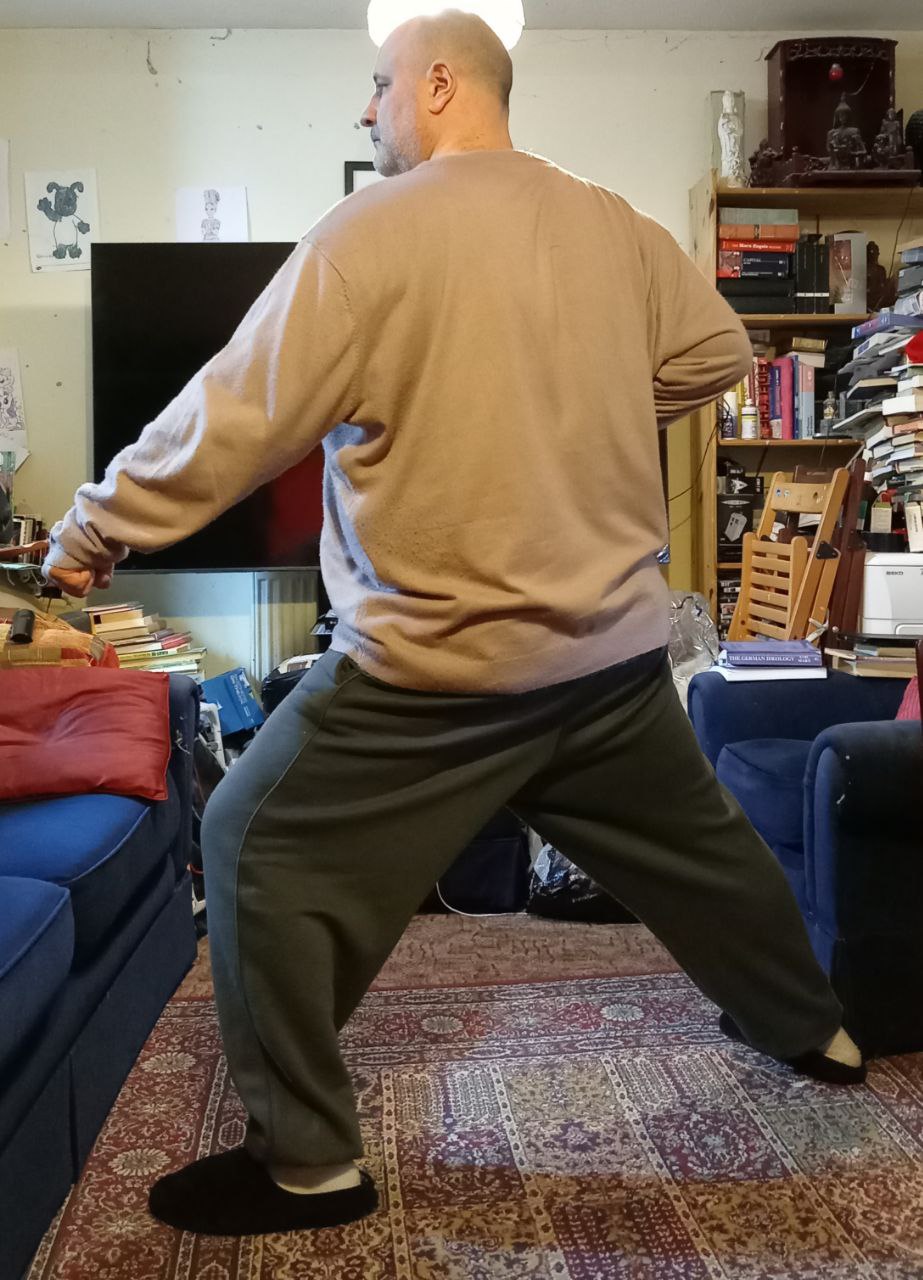
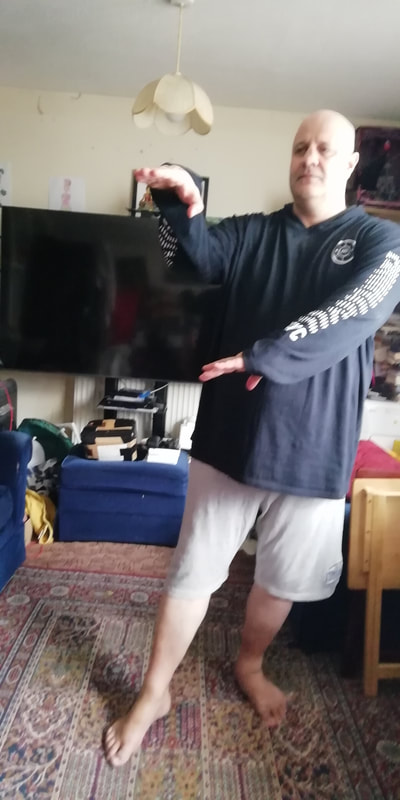
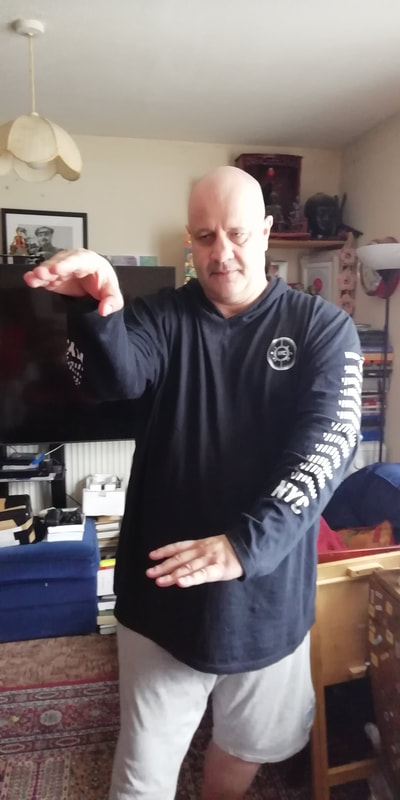
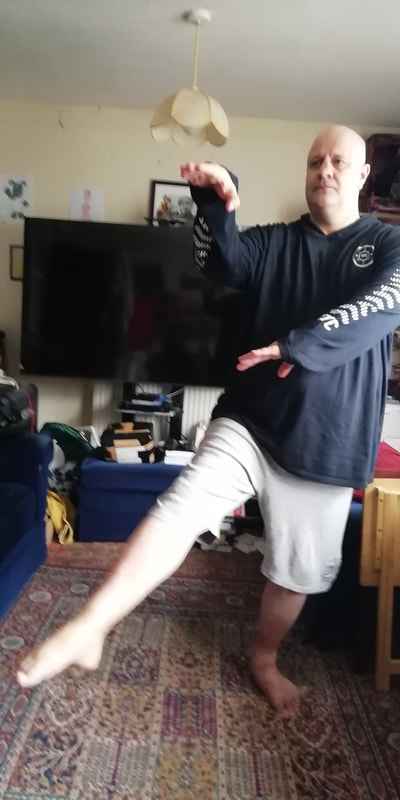
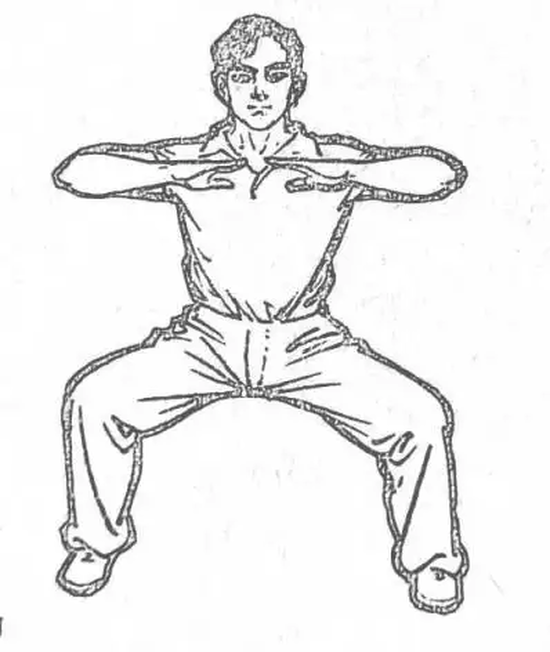
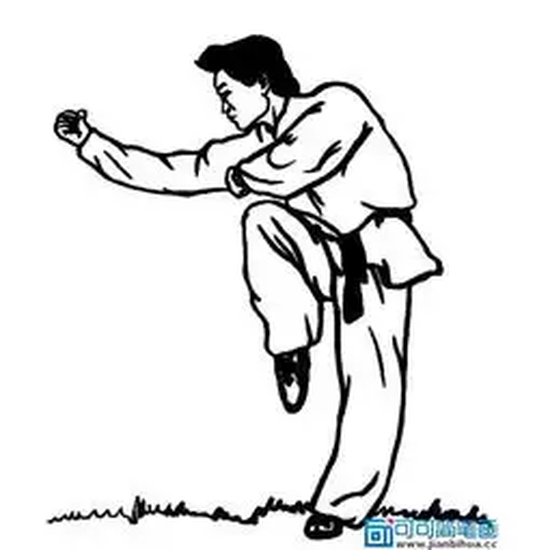
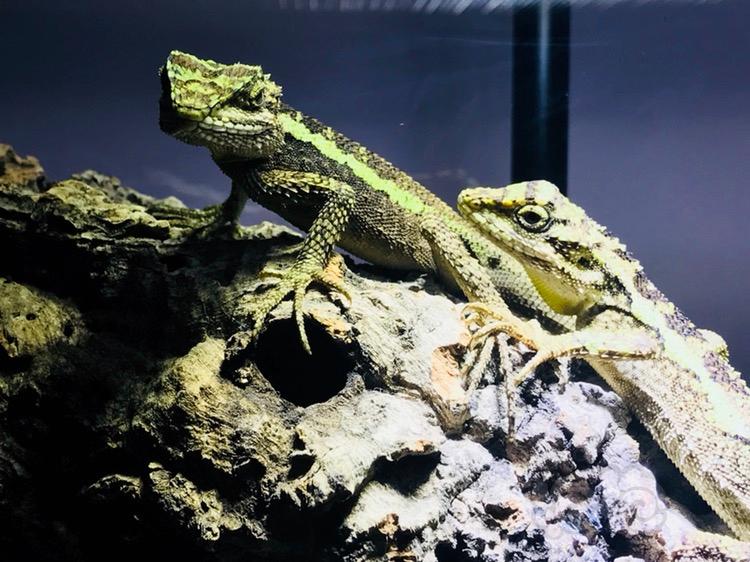
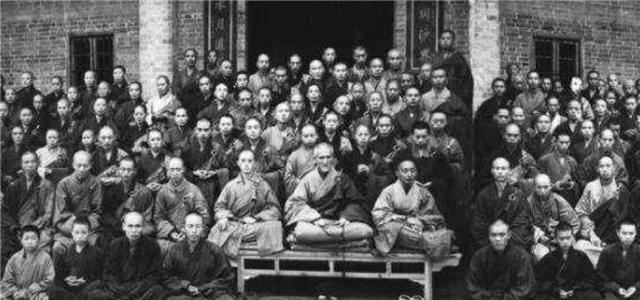
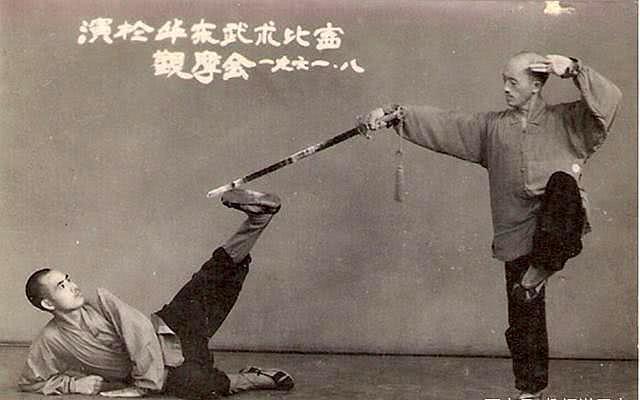
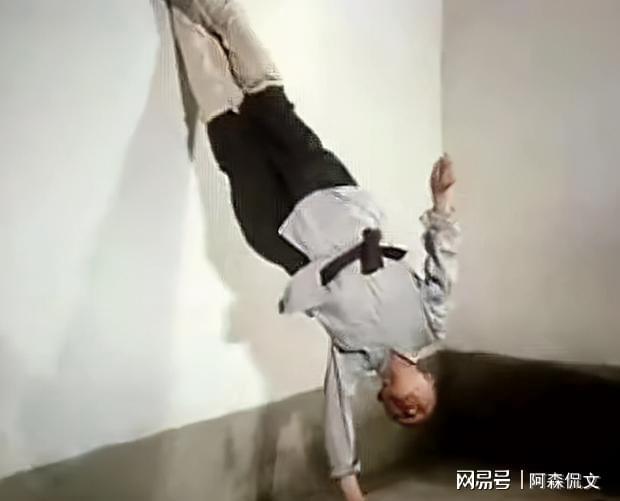
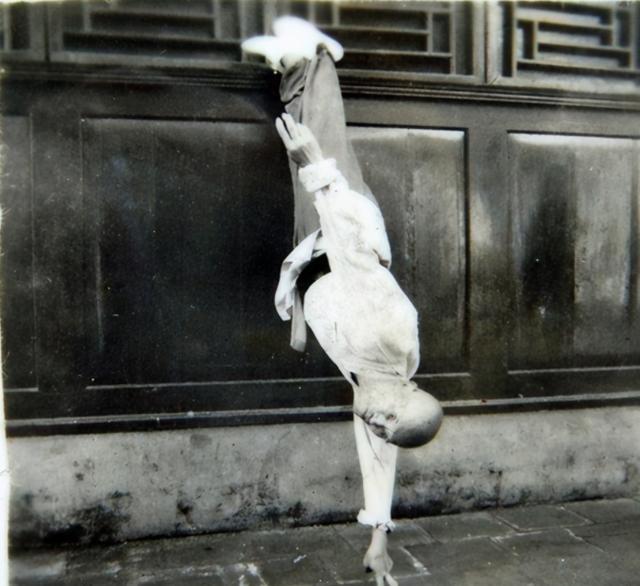
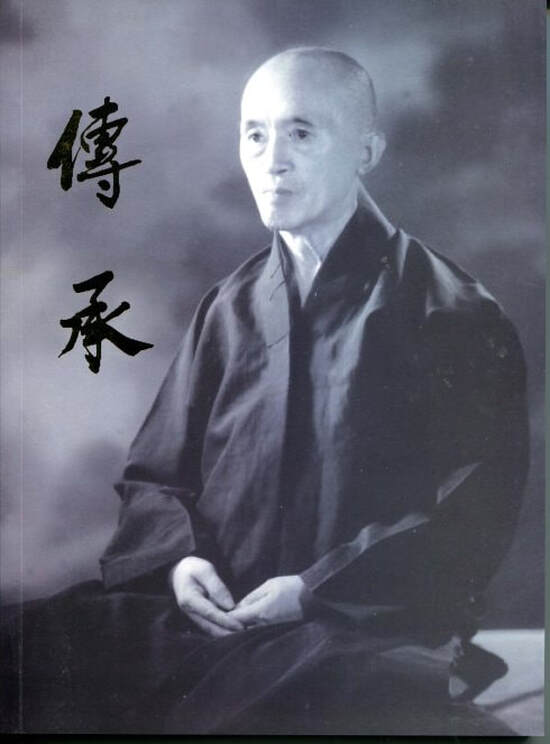
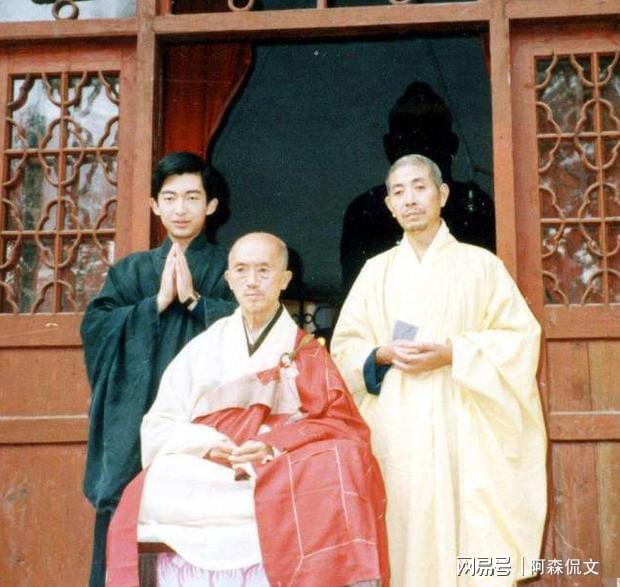
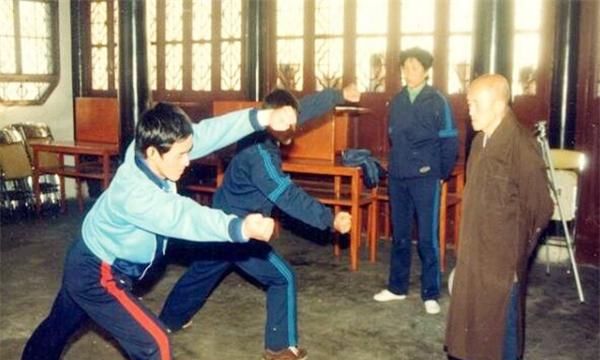
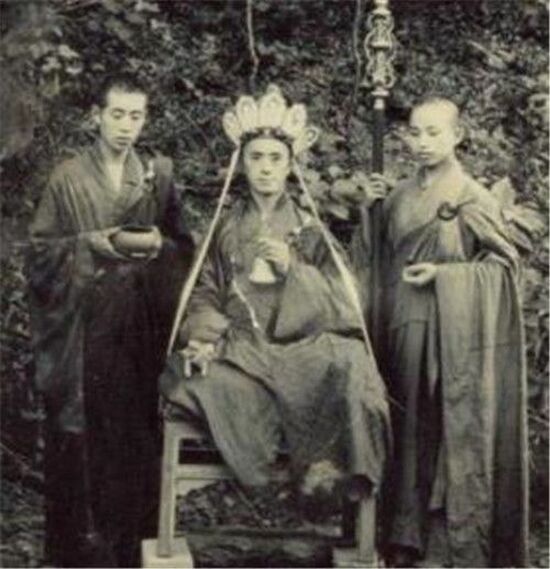
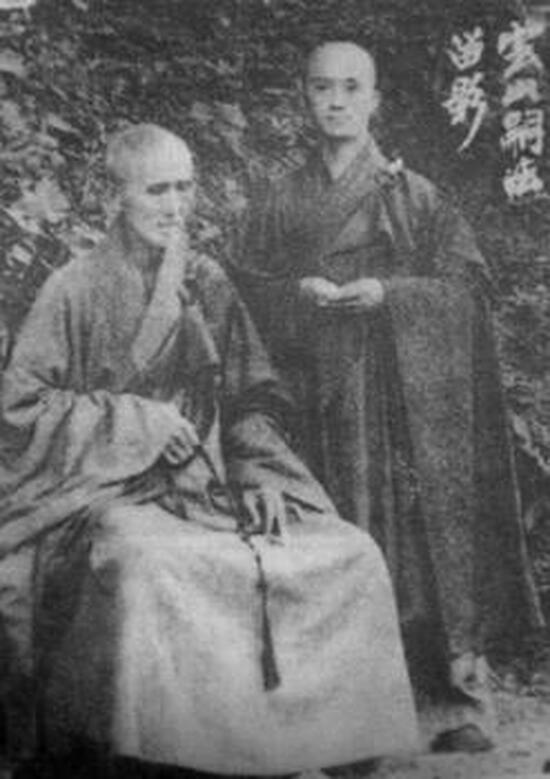
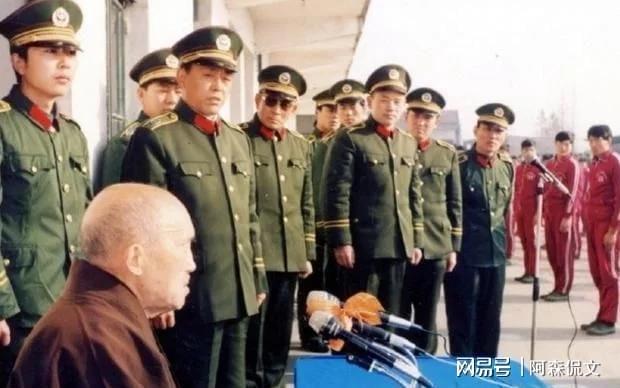
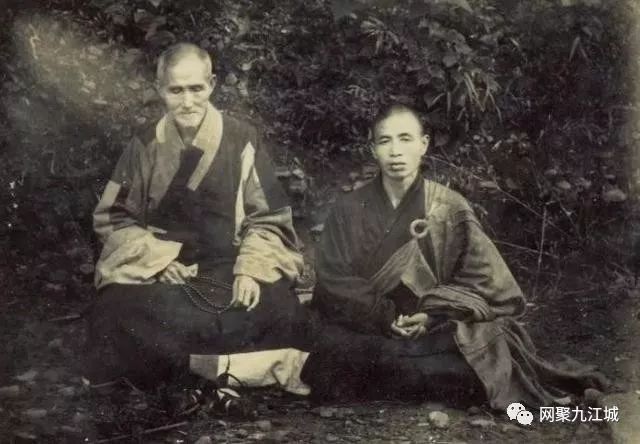
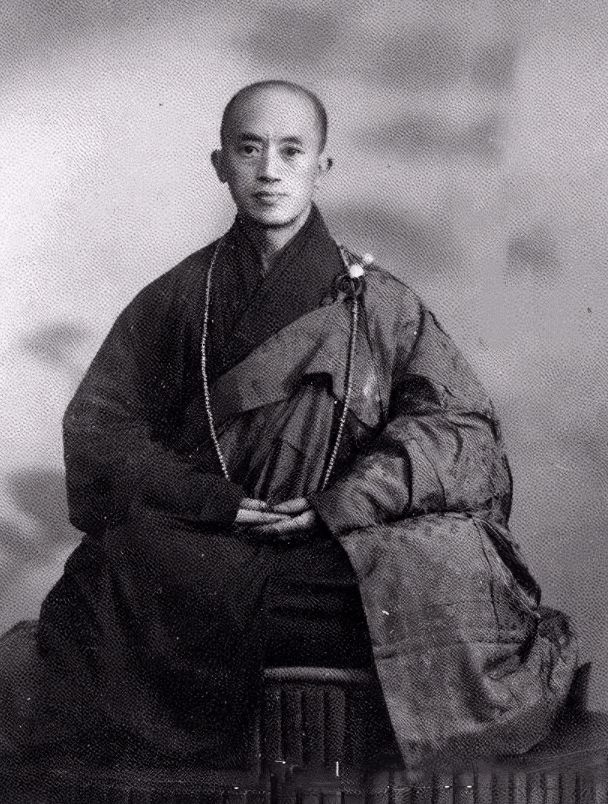
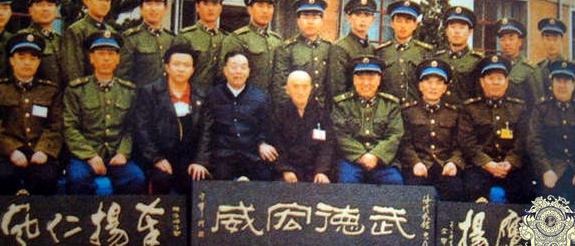
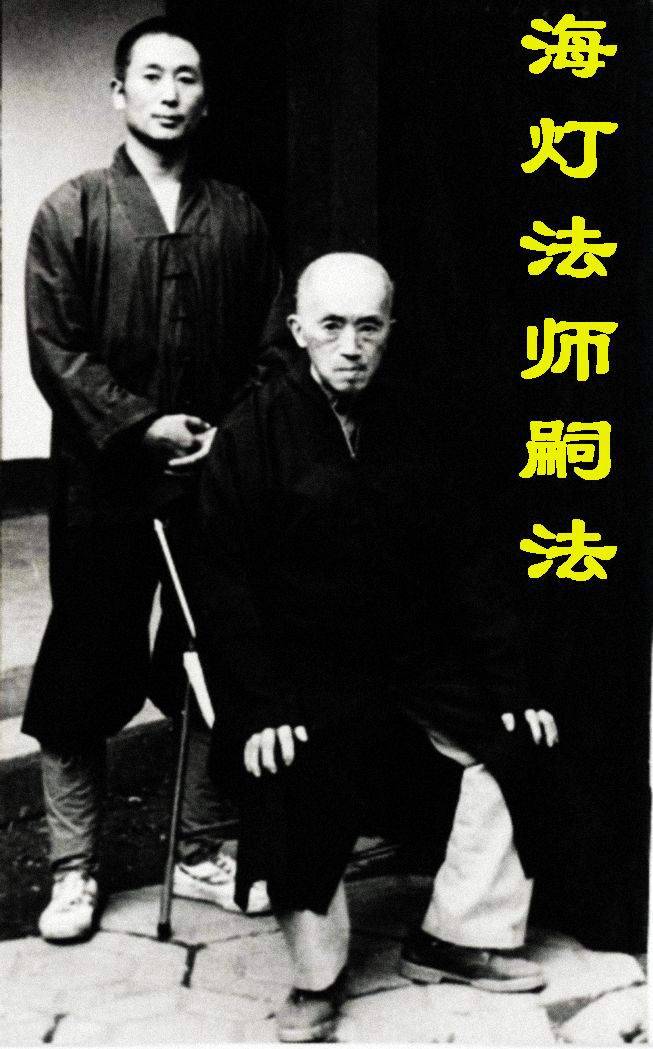
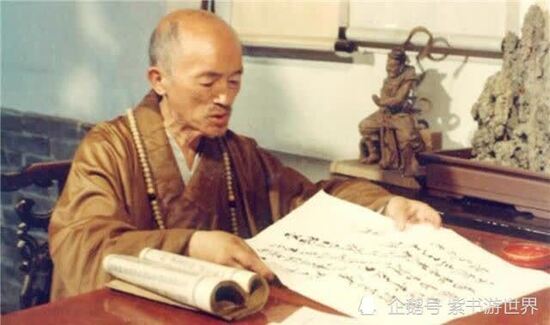
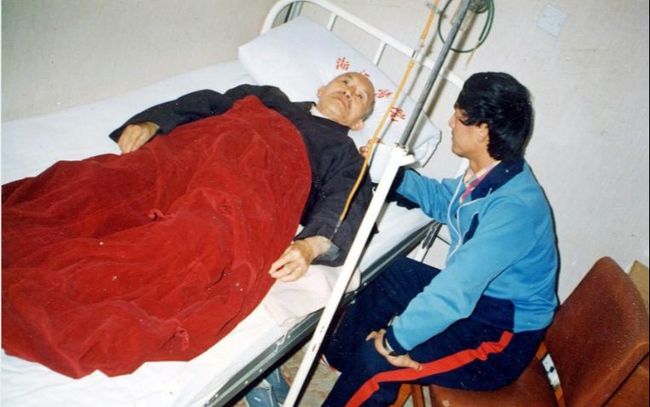
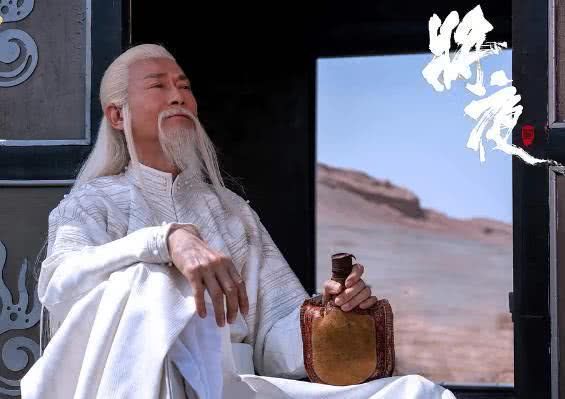
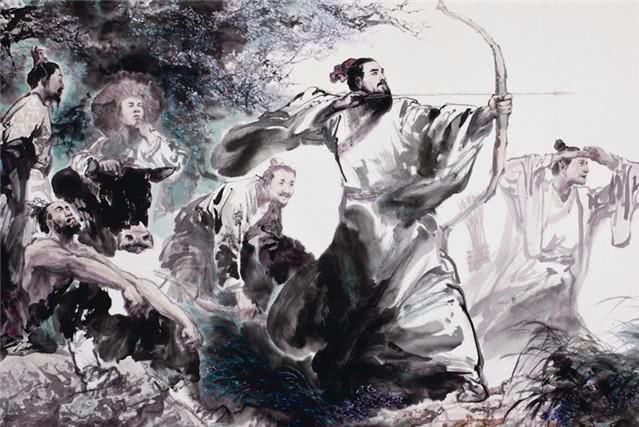
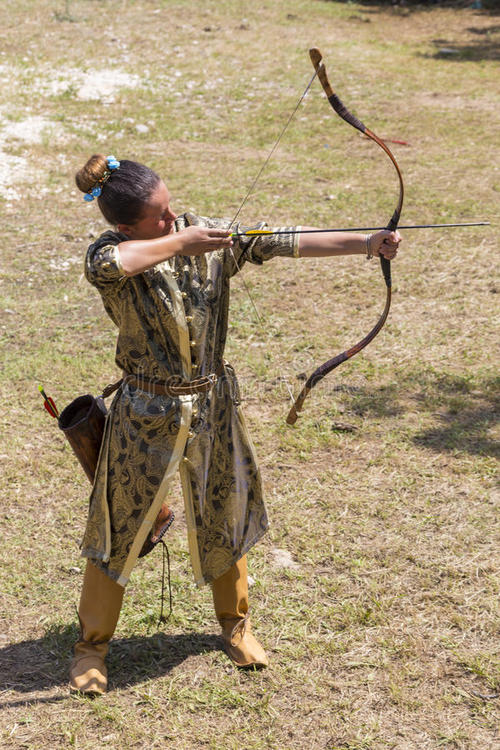
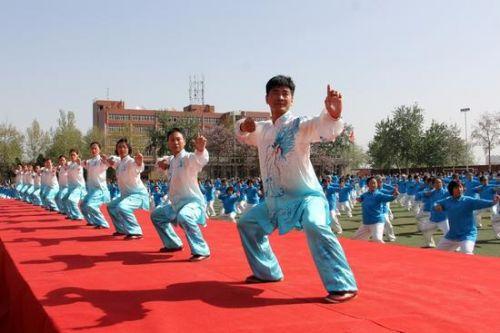

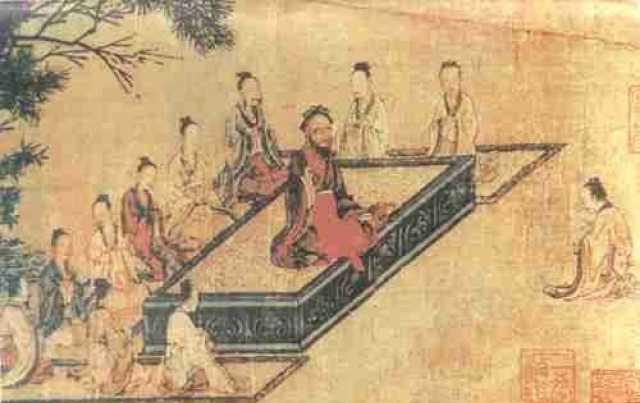
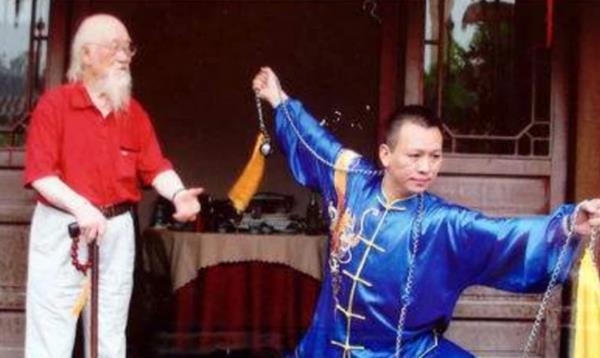
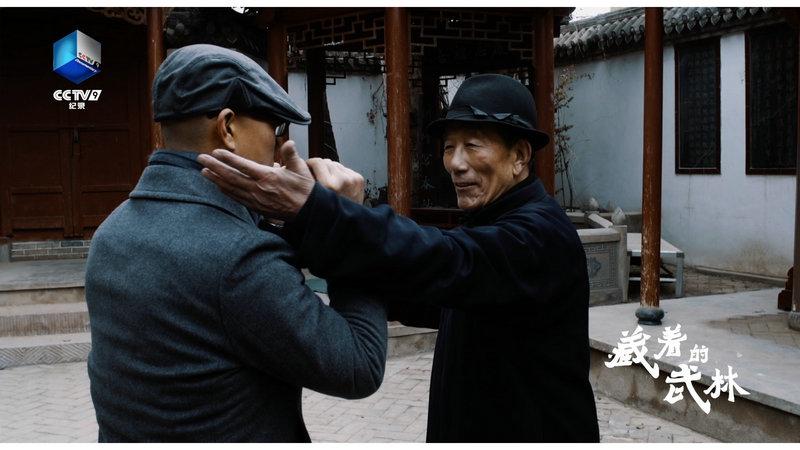
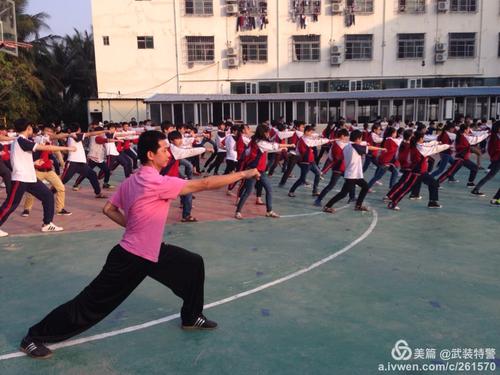
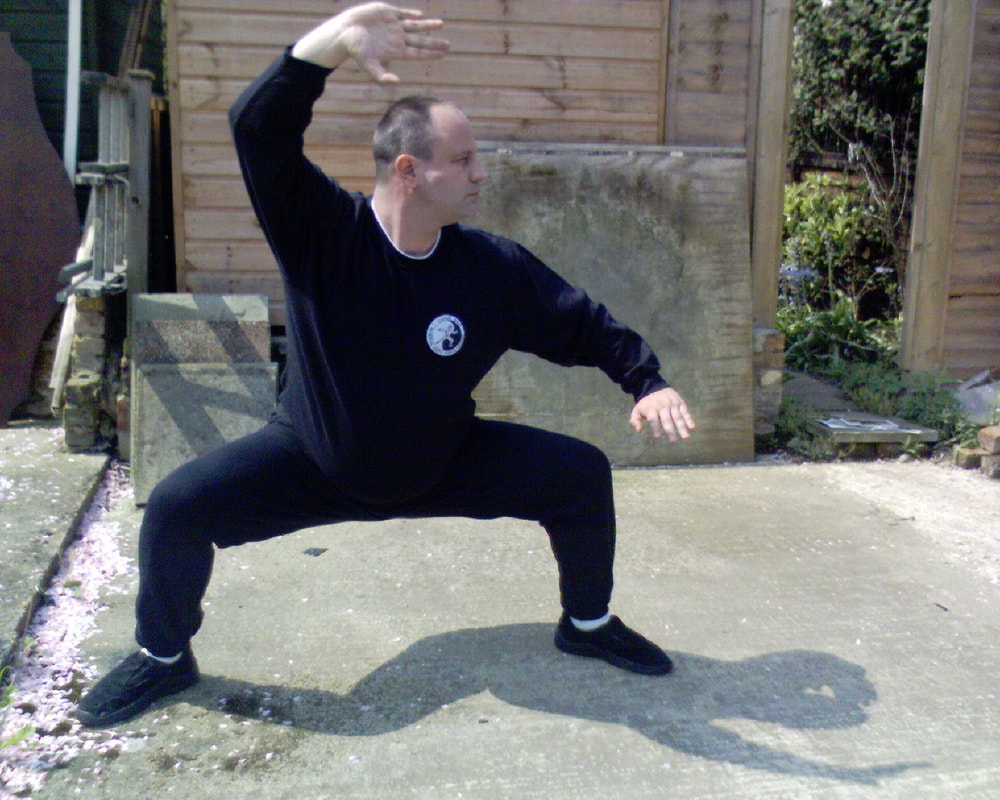
 RSS Feed
RSS Feed